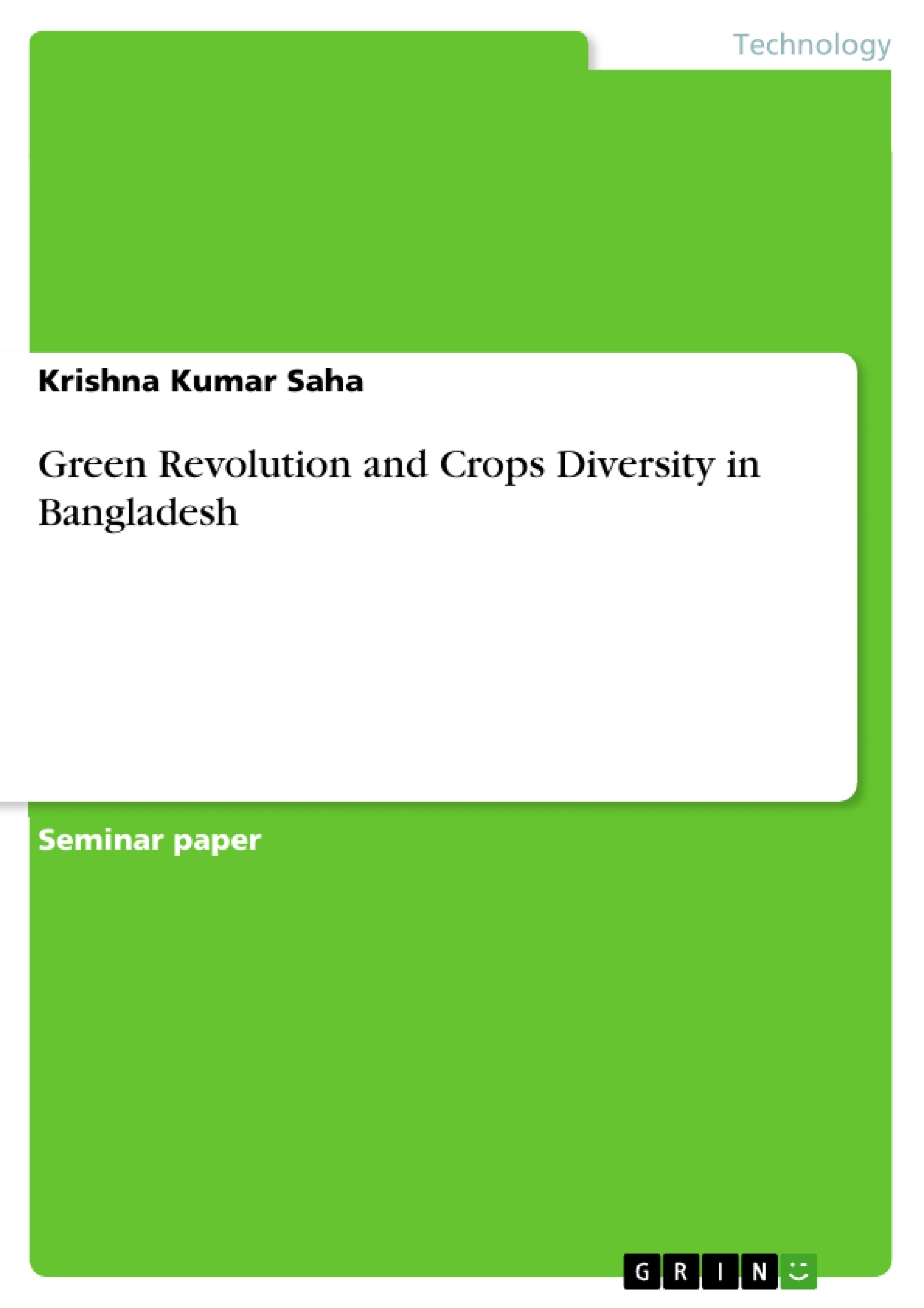Bangladesh has made a remarkable success in the agricultural production sector. Without the mechanization, using High Yielding Verities (HYV), and so-called ‘Green Revolution’ it would have never been possible to maintain the growth and development of the agricultural sector of this country. In addition, it is the key to maintaining the national food-population balance.
This current paper attempts to investigate the consequences of ‘Green Revolution’ on crops diversity in Bangladesh. This paper attempts to show the pattern of changes that have taken place in different sectors of Bangladesh. It includes population growth, labor absorption, and land-use in agriculture, food security, nutrition, income distribution, rural poverty, and policy. Most of them are upwards sloping growth but the crops diversity in agriculture is decreasing in Bangladesh. That is the main reason for making the agriculture more vulnerable to unsustainability.
Inhaltsverzeichnis (Table of Contents)
- Abstract
- Content
- Introduction
- Hypothesis and Research question
- Sources and Methodology
- What is Green Revolution (GR)?
- Green Revolution in South Asia
- Green Revolution in Bangladesh
- Population Growth and Green Revolution in Bangladesh
- Labor Absorption and Impact on Green Revolution
- Land Use Pattern in Green Revolution
- Green Revolution and Food Security in Bangladesh
- Green Revolution and Nutrition in Bangladesh
- Green Revolution and Income Distribution in Bangladesh
- Green Revolution and Rural Poverty in Bangladesh
- Policy Implications
- Consequences of Green Revolution: Overall Perspective
- Conclusion
Zielsetzung und Themenschwerpunkte (Objectives and Key Themes)
The main objective of this paper is to investigate the impact of the Green Revolution on crops diversity in Bangladesh. The study examines how the introduction of modern technology and high-yielding varieties in agriculture has affected various aspects of Bangladesh's socio-economic landscape.
- The impact of the Green Revolution on crops diversity in Bangladesh
- The relationship between the Green Revolution and population growth in Bangladesh
- The impact of the Green Revolution on food security, nutrition, and income distribution in Bangladesh
- The role of the Green Revolution in influencing rural poverty in Bangladesh
- The policy implications of the Green Revolution in Bangladesh
Zusammenfassung der Kapitel (Chapter Summaries)
This paper begins by providing a background of the Green Revolution from a regional perspective. It examines the consequences of this revolution on crops diversity, including its impact on population growth, labor absorption, and land use. The study also explores how the Green Revolution has influenced food security, nutrition, income distribution, and rural poverty in Bangladesh. The conclusion of the paper presents the overall perspective on the consequences of the Green Revolution.
Schlüsselwörter (Keywords)
The paper primarily focuses on the Green Revolution, its impact on crops diversity, and its implications for Bangladesh's agricultural sector. Key concepts and themes include agricultural diversity, high-yielding varieties, food security, population growth, labor absorption, land use, nutrition, income distribution, and rural poverty.
- Quote paper
- Krishna Kumar Saha (Author), 2016, Green Revolution and Crops Diversity in Bangladesh, Munich, GRIN Verlag, https://www.hausarbeiten.de/document/353182


